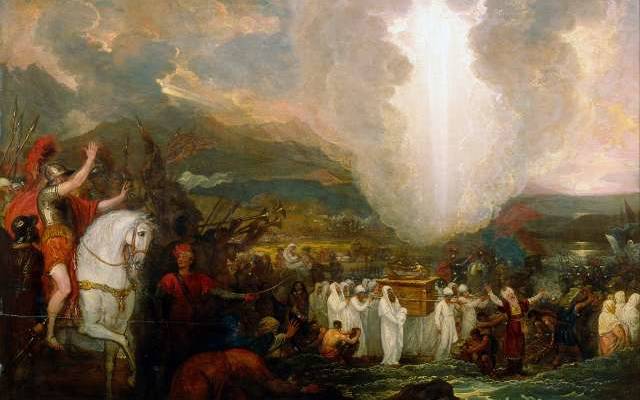Although the matter is still hotly debated, there is evidence indicating that the Exodus story may have taken place earlier than assumed by many archaeologists.
Some historians set the time of the Exodus of the Israelites from Egypt, which is recited each year at the Passover table, at around the time of Ramses II (1303 BCE-1213 BCE).
The tanakh (bible) claims that the Israelis built Ramses, while an inscription from around the time of Ramses II states “Distribute grain rations to the soldiers and to the Apiru who transport stones to the great pylon of Ramses.”
Similarly, a victory stele of Pharaoh Amenhotep II (1427 BCE-1401 BCE), lists various captives sent to Egypt and 3600 Apiru are listed as Egyptian slaves, implying that Apiru slaves were already in the Land of Egypt in the time of Ramses II. Some scholars believe the Apiru to be Hebrews.
Timing is Everything
However, ancient Egyptian records assert that nothing resembling the Exodus story took place during the time of Ramses II.
This fact has led some to question the existence of the Exodus story.
Yet, Immanuel Velikovsky, writing in 1952, has asserted that the apparent conflict between archeology and the Tanakh related to the Exodus story is based on the fact that the Exodus story has been misdated and that if the Exodus story is dated correctly, all such contradictions disappear.
Furthermore, the archaeologist Emmanuel Anati asserted, “The name of Ramses, in the book of Exodus and in that of Genesis, emerges as a geographical indication: it indicates the site where, according to tradition, the Hebrews were in Egypt. It is not necessarily the same name that the site must have had at the epoch of the Patriarchs or at the time of Moses.”
Indeed, according to the Midrash (rabbinic literature), the Pharoah of the Exodus story was named Adikam, not Ramses II, and he had a short reign of four years before drowning in the Red Sea. The Pharaoh who preceded Adikam, according to the Midrash, was named Malul, who reigned from age six to 100.
Interestingly, the Egyptian historian priest, Manetho, writing in the 3rd century BCE, as well as an ancient Egyptian papyrus known as the Turin Royal Cannon mentioned a pharaoh who ruled from age six to 100 known as Pepi II (2284 BCE-2184 BCE).
During the Sixth Dynasty, of which Pepi II was part, the Egyptians conducted many punitive raids. According to Anati, “A commander by the name of Uni immortalized the actions against the Asiatics “that live in the territory of sand” and describes situations comparable to those in the book of Exodus.
From the accounts we get a picture of a world conceptually and contextually very near that described in the biblical narrations. The army of Uni devastated the animal enclosures, destroyed the huts, chopped down the figs and grape trees and safely came back to Egypt.”
Furthermore, the Ipuwer Ammunitions, dated between 2345 BCE to 2181 BCE, describes many events very similar to the Ten Plagues. One papyrus notes “the river is blood,” which corresponds with Exodus 7:20, stating “all of the waters that were in the river turned to blood. Another papyrus claimed “the land is not light,” which is similar to Exodus 10:22, “and there was a thick darkness in all of the land of Egypt.”
Yet still another papyrus spoke of “forsooth, gates, columns, and walls” being “consumed by fire,” while Exodus 9:23-24 asserted, “The fire ran along the ground….there was hail and fire mingled with hail, very grievous.”
And another papyrus spoke of how the trees were “destroyed. No fruits nor herbs were found.” Exodus 9:25 claimed, “And the hail smote every herb of the field and brake every tree of the field.” Furthermore, even the killing of the First Born Sons was mentioned in this Papyrus, claiming, “Forsooth, the children of princes are dashed against the wall. Forsooth, the children of princes are cast into the streets.” Exodus 12:29 declared, “And it came to pass, at midnight, the Lord smote all of the firstborn in the Land of Egypt, from the firstborn of Pharoah that sat on the throne unto the firstborn of the captive that sat in the dungeon.”
Although the matter is still hotly debated, given this evidence, the Exodus story could likely have taken place earlier than what many archaeologists assert.
By Rachel Avraham


Send Passover Packages to Needy Israeli Soldiers - Bring Them Joy!
We are honored to thank the young men and women of the IDF who risk their lives every day to protect the citizens of Israel. Since October 7th, soldiers have been on the battlefield for months - many are hoping to come home for Passover.
Join us in sending Passover food packages (and personal notes) to Israeli soldiers and their families.
Many soldiers spend the Passover holiday with needy families back home. The soldiers greatly appreciate your love and concern. Bring them Passover joy!
CLICK HERE TO SEND YOUR PACKAGE AND NOTE TO ISRAELI SOLDIERS!




